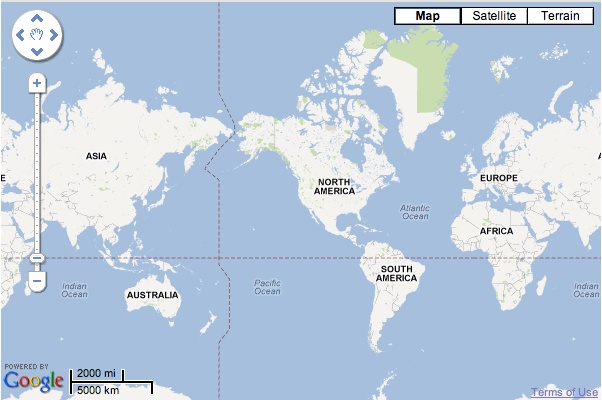Chapter 7. Geolocation
The Geolocation API provides scripted access to geographical location information associated with the hosting device. This gives your applications the ability to locate users and track their latitude and longitude as they move about. This functionality could be used for many interesting use cases such as:
- Geofencing
Give your app the ability to schedule a task to alert users the moment they enter or leave a location. You could also target ads for users within a certain city or state.
- Geocoding
Combine your app with a service like the Google Maps API (Figure 7-1), and you can translate latitude and longitude coordinates into actual postal addresses.
- General tracking
Track distances driven, walked, or ran.
The API itself is device agnostic; it doesn’t care how the browser determines location. The underlying mechanism to obtain the user’s actual location may be through WiFi, GPS, or by the user actually entering a zip code into the device. The API is designed to gather both “one-shot” position requests and repeated position updates. Of course, Geolocation is no different than any of the other HTML5e APIs in regard to bugs, workarounds, and differences in implementations across browsers. After a review of the basics, we’ll dive into the cross-browser nuances.

To access a user’s location, run the following JavaScript: ...
Get HTML5 and JavaScript Web Apps now with the O’Reilly learning platform.
O’Reilly members experience books, live events, courses curated by job role, and more from O’Reilly and nearly 200 top publishers.

